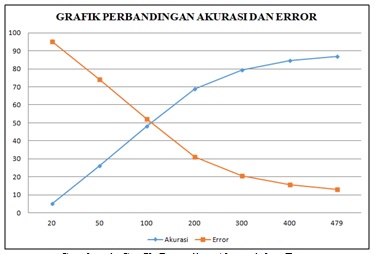Penggunaan Metode Naïve Bayes Classifier pada Analisis Sentimen Facebook Berbahasa Indonesia
Abstract
Sentiment analysis is a field that is currently in great demand by various groups. Sentiment analysis can be done using documents and opinions from social media. One social media that is usually used as a means of opinion is Facebook social media. Before a text is classified, it is necessary to do POS Tagging which is the word labeling stage where the purpose is to determine the words which include opinions and non opinions. For labeling words can use the Hidden Markov Model or Rule Based. The method commonly used in sentiment analysis is the Naïve Bayes Classifier method. This method simply classifies probabilities. Naïve Bayes Classifier can be used to classify opinions into positive and negative opinions. In addition, this method uses training data in the classification process. The classification produced from the Naïve Bayes Classifier method is quite good. To test the accuracy of the system in classifying opinions, the classification results are tested. From the test results obtained an average accuracy of 87.1%. The more training data that is similar to testing data, the better the classification results.
Downloads
References
[2] B. Liu, Sentiment Analysis and Opinion Mining. Morgan and Claypool Publishers, May 2012.
[3] A. Ortigosa, J. M. Martin, and R. M. Carro, “Sentiment analysis in Facebook and its application to e-learning”, Computers in Human Behavior., vol. 31, pp. 527–541, 2014.
[4] Surroop, K., Canoo, K., & Pudaruth, S., “A Novel Position-based Sentiment Classification Algorithm for Facebook Comments”, International Journal of Advanced Computer Science and Applications, Vol 7, issue 10, 261–268, 2017.
[5] Routray, Swain, and Mishra, “A Survey on Sentiment Analysis”, International Journal of Computer Applications, August, Vol 70, Issue 10, 2013.
[6] C. Troussas, M. Virvou, K. J. Espinosa, K. Llaguno, and J. Caro, “Sentiment analysis of Facebook statuses using Naïve Bayes classifier for language learning”, IEEE., 2013.
[7] K. Widhiyanti dan A. Harjoko, “POS Tagging Bahasa Indonesia dengan HMM dan Rule Based”, Jurnal Teknologi Komputer dan Informatika., Vol 8, No 2, Nopember 2012.
[8] P. B. Matharasi dan A. Senthilrajan, “Sentiment Analysis of Twitter Data Using Naïve Bayes with Unigram Apparoach”, International Journal of Scientific and Research Publication, vol 7, issue 5, May 2017.
[9] (2017) Informatikalogi website. [Online]. Available: https://informatikalogi.com/algoritma-naive-bayes/
[10] Astaridewi, “Sistem Klasifikasi Reporting Berita Menggunakan Metode Naive Bayes (Studi Kasus Situs Resmi Pemerintahan). Jimbaran: Program Studi Teknik Informatika Jurusan Ilmu Komputer Fakultas Matematika Dan Ilmu Pengetahuan Alam Universitas Udayana”. Skripsi, Universitas Udayana, Indonesia, 2015.


This work is licensed under a Creative Commons Attribution-NonCommercial-NoDerivatives 4.0 International License.

This work is licensed under a Creative Commons Attribution 4.0 International License




